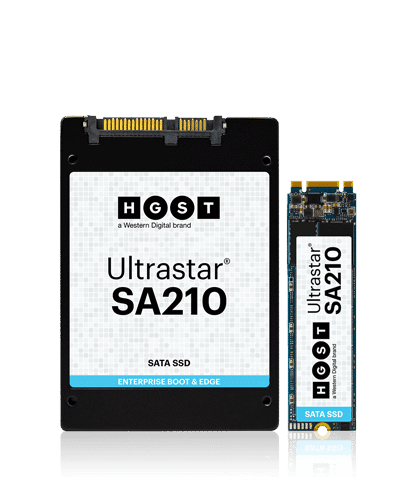Enabling Data to Thrive in Content Delivery Networks
Today, Western Digital introduced a purpose-built SATA SSD for read-intensive workloads, typical in environments like content delivery networks (CDNs). But before I share some product specifics, let’s take a quick look at what CDNs make possible.
Several exciting, major sporting events are set to take place in 2018 that will captivate audiences across the globe. Content Delivery Networks (CDNs) will play a key role in broadcasting this year’s events in new ways.
This year viewers may experience video televised and streamed in up to 4K Ultra High Definition (UHD) with dozens of cameras per event giving broadcasters a variety of viewpoints to share with audiences worldwide. Viewers will be able to experience sporting events like never before with these advancements and feel like they’re right there in the game! In addition to the action on the field I am eager to see if past video streaming records will be broken.
[TWEET “Enabling data to thrive for #CDNs and beyond”]
 Flash and SSD Enabling New Viewer Experience
Flash and SSD Enabling New Viewer Experience
Flash storage is one of the key technologies that enables this new high definition viewer experience. Fans streaming sporting events this year will still recognize the games, but with better quality audio and video. 4K UHD provides four times the resolution of 1080P HD. Flash storage and SSDs provide the high performance and ultra-low latency storage media to power today’s media streaming infrastructure.
What may not be recognizable is the latest generation of SSD product capabilities compared to SSD products in the past. Advances in SSD technology continue to make strides in system performance, scalability, and cost per gigabyte efficiency.
CDNs’ Ever-Expanding Role
CDNs have started making the transition to SSDs for improvements in performance for delivering a better user experience. Today, CDN architects have fully embraced SSDs and rely on Western Digital to continue our SSD innovation. We’re helping CDNs expand their roles so they can continue to fuel digital consumer appetites and embrace digital business transformation.
Moving beyond web and video streaming CDNs have matured over the past four years to offer additional services. They now play a critical role not only in streaming but in improving network security, providing video workflow services, supporting IOT, enabling real-time pricing for retail and e-commerce apps, creating dynamic ads and connecting with digital media content providers for digital rights management (DRM). Their infrastructure demands have evolved to meet these changes.
Delivering a Purpose-Built SSD for CDNs
Ultrastar® SA210 SATA SSD is a purpose-built SSD that was designed to address the storage infrastructure requirements of a service provider, telco, hyperscaler, or anyone deploying an enterprise CDN. Here are some of the advantages it delivers:
- More power efficient than previously available data center SSDs so you can scale while keeping OPEX in check.
- Versatile design choices offering up to 1.92TB[1] capacity in either 2.5-inch 7mm drive or M.2 2280 form factor.
- Optimized performance for sustained throughput. Delivers low latency under heavy read operations with write performance to support CDN edge content delivery.
- Data security through self-encrypting TCG OPAL 2.01 with Instant Secure Erase protects content and simplifies drive redeployment.
- Enterprise-grade reliability with 2M hours MTBF rating and 5-year limited warranty for peace of mind. [2]
- Data center interoperability proven through test validation with Microsoft® Windows Server® 2012/2016 and various versions of the enterprise Linux® operating systems.
With a track record of delivering generations of SSD technology and products, Western Digital introduces a purpose-built SSD for the unique workload characteristics of read-intensive CDNs for edge content delivery. Learn more about Ultrastar SA210 SATA SSD.
Beyond CDNs
Of course, we didn’t just design the Ultrastar SA210 SATA SSD for CDNs. Many read-intensive use cases can also benefit:
Like the participants in this year’s sporting events, we’re deeply committed to teamwork to bring about the best possible results!
Visit the HGST website to learn more and think about how Ultrastar SA201 SATA SSDs can be part of your winning team.
[1] One terabyte (TB) is equal to 1,000GB (one trillion bytes) when referring to solid-state capacity. Accessible capacity will vary from the stated capacity due to formatting and partitioning of the drive, the computer’s operating system, and other factors.
[2] MTBF and AFR targets are based on a sample population and are estimated by statistical measurement and acceleration algorithms under median operating conditions. MTBF and AFR rating do not predict an individual drive’s reliability and do not constitute a warranty.




